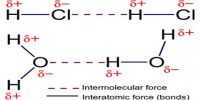Characteristics of Free energy ‘G’
i) G is defined as (H-TS) where H and S are the enthalpy and entropy of the system respectively. T = temperature. Since H and S are state functions, G is a state function.
ii) G is an extensive property while ΔG = (G2 – G1) which is the free energy change between the initial (1) and final (2) states of the system becomes the intensive property when mass remains constant between initial and final states (or) when the system is a closed system.
iii) G has a single value for the thermodynamic state of the system.
iv) G and ΔG values correspond to the system only. There are three cases of ΔG in predicting the nature of the process. When, ΔG<0 (negative), the process is spontaneous and feasible; ΔG = 0. The process is in equilibrium and ΔG > 0 (positive), the process is nonspontaneous and not feasible.
v) ΔG = ΔH – TΔS. But according to I law of thermodynamics,
ΔH = ΔE + PΔV and ΔE = q – w.
∴ ΔG = q – w + PΔV – TΔS
But ΔS = T/q and TΔS = q = heat involved in the process.
∴ ΔG = q – w + PΔV – q = –w + PΔV
(or) –ΔG = w – PΔV = network.
The decrease in free energy –ΔG, accompanying a process taking place at constant temperature and pressure is equal to the maximum obtainable work from the system other than work of expansion.
This quantity is called as the “net work” of the system and it is equal to (w – PΔV).
∴ Net work = –ΔG = w – PΔV.
–ΔG represents all others forms of work obtainable from the system such as electrical, chemical or surface work etc other than P-V work.













